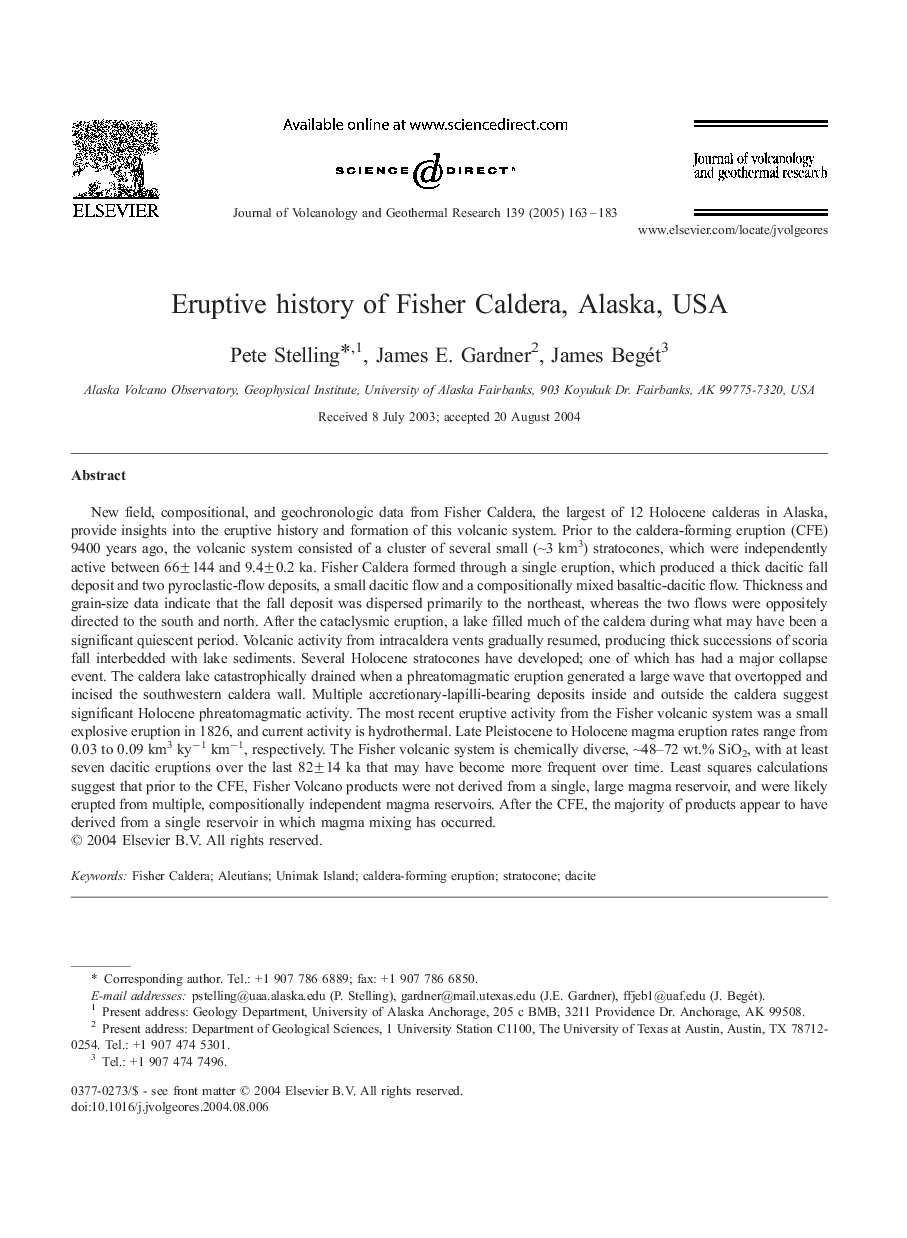| کد مقاله | کد نشریه | سال انتشار | مقاله انگلیسی | نسخه تمام متن |
|---|---|---|---|---|
| 9531678 | 1638503 | 2005 | 21 صفحه PDF | دانلود رایگان |
عنوان انگلیسی مقاله ISI
Eruptive history of Fisher Caldera, Alaska, USA
دانلود مقاله + سفارش ترجمه
دانلود مقاله ISI انگلیسی
رایگان برای ایرانیان
موضوعات مرتبط
مهندسی و علوم پایه
علوم زمین و سیارات
ژئوشیمی و پترولوژی
پیش نمایش صفحه اول مقاله

چکیده انگلیسی
New field, compositional, and geochronologic data from Fisher Caldera, the largest of 12 Holocene calderas in Alaska, provide insights into the eruptive history and formation of this volcanic system. Prior to the caldera-forming eruption (CFE) 9400 years ago, the volcanic system consisted of a cluster of several small (â¼3 km3) stratocones, which were independently active between 66±144 and 9.4±0.2 ka. Fisher Caldera formed through a single eruption, which produced a thick dacitic fall deposit and two pyroclastic-flow deposits, a small dacitic flow and a compositionally mixed basaltic-dacitic flow. Thickness and grain-size data indicate that the fall deposit was dispersed primarily to the northeast, whereas the two flows were oppositely directed to the south and north. After the cataclysmic eruption, a lake filled much of the caldera during what may have been a significant quiescent period. Volcanic activity from intracaldera vents gradually resumed, producing thick successions of scoria fall interbedded with lake sediments. Several Holocene stratocones have developed; one of which has had a major collapse event. The caldera lake catastrophically drained when a phreatomagmatic eruption generated a large wave that overtopped and incised the southwestern caldera wall. Multiple accretionary-lapilli-bearing deposits inside and outside the caldera suggest significant Holocene phreatomagmatic activity. The most recent eruptive activity from the Fisher volcanic system was a small explosive eruption in 1826, and current activity is hydrothermal. Late Pleistocene to Holocene magma eruption rates range from 0.03 to 0.09 km3 kyâ1 kmâ1, respectively. The Fisher volcanic system is chemically diverse, â¼48-72 wt.% SiO2, with at least seven dacitic eruptions over the last 82±14 ka that may have become more frequent over time. Least squares calculations suggest that prior to the CFE, Fisher Volcano products were not derived from a single, large magma reservoir, and were likely erupted from multiple, compositionally independent magma reservoirs. After the CFE, the majority of products appear to have derived from a single reservoir in which magma mixing has occurred.
ناشر
Database: Elsevier - ScienceDirect (ساینس دایرکت)
Journal: Journal of Volcanology and Geothermal Research - Volume 139, Issues 3â4, 15 January 2005, Pages 163-183
Journal: Journal of Volcanology and Geothermal Research - Volume 139, Issues 3â4, 15 January 2005, Pages 163-183
نویسندگان
Pete Stelling, James E. Gardner, James Begét,